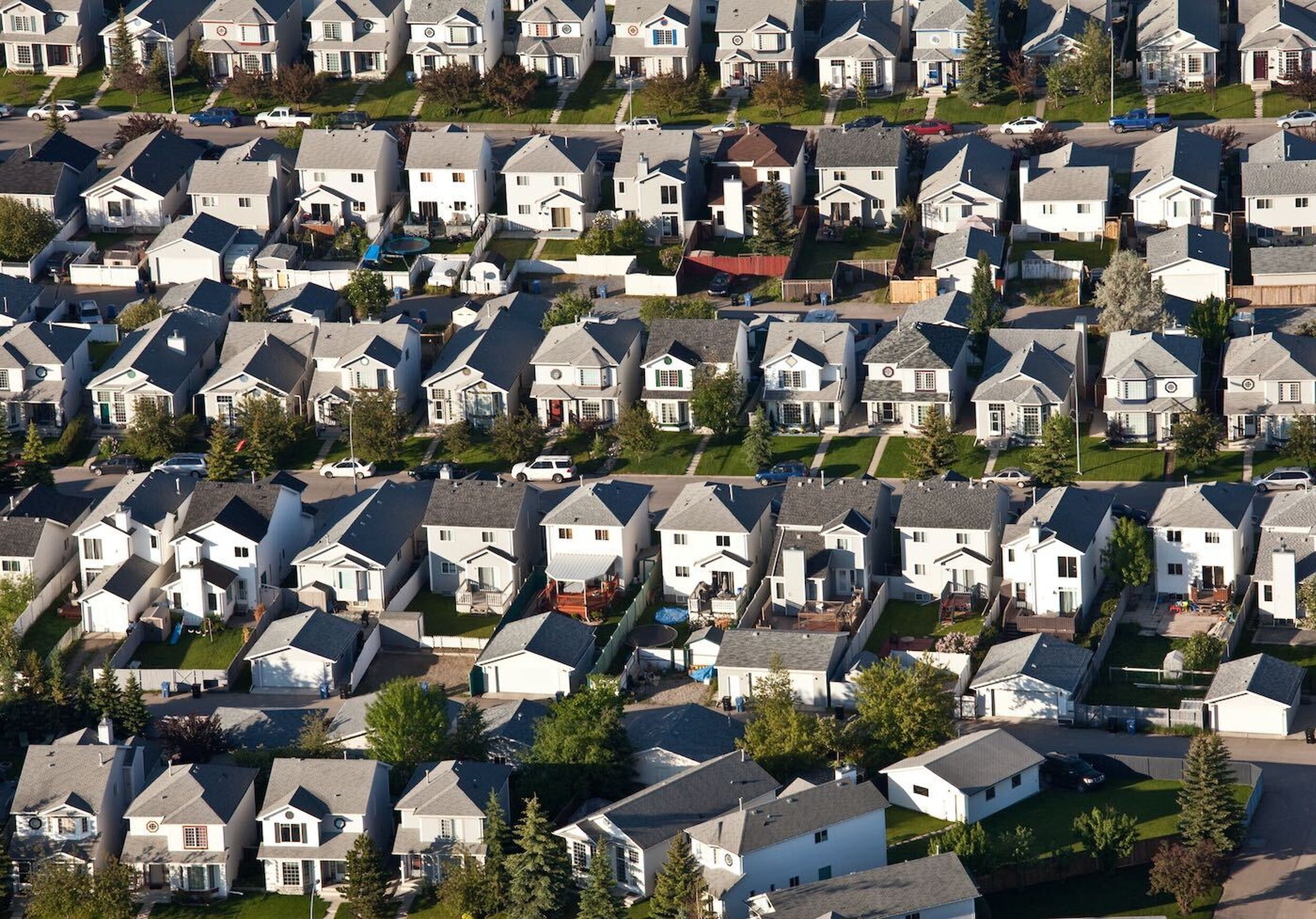
Calgary sprawl as seen from a hot-air balloon. Photo: iStock.com/ImagineGolf
OPINION: Who really benefits from urban sprawl?
Costs are socialized — but the profits aren’t.
Despite plans to curb Calgary's urban sprawl, it keeps getting built. The city’s plan for long-range sustainability, ImagineCALGARY, was published in 2007. Plan It was passed by city council in 2009. Nenshi was re-elected in 2013 promising to end the sprawl subsidy and council ended it in 2016—at least on paper.
So, what gives? Or, perhaps more boldly, who benefits?
The development and home-building industries are the most obvious place to point a finger. It was, after all, developers and home builders that plotted to install an industry-friendly slate of candidates in the 2013 municipal election. In Calgary’s 2017 election, a developer again publicly endorsed a list of preferred candidates.
These industries are a permanent activist class in municipal politics. They are always pushing for their interests. Their industries depend, quite literally, on ensuring that they can build. City council determines a great deal of their future business, so it’s natural that they push hard come election time.
Developers who made their profits building out Calgary’s existing sprawl understandably want the good times to continue. Building suburbs is lower-risk and involves economies of scale. Design a few house plans and replicate them over an entire neighbourhood template. Since it’s built on a greenfield, you’re not displacing anyone, and there are no neighbours that will complain.
These industries are a permanent activist class in municipal politics.
Compare this to building in the inner city. Urban developers must constantly be on the hunt for relatively scarce sites to build on. Each site requires consultations, zoning considerations, approvals, potential backlash, and once it’s completed, the plans probably can’t be perfectly repeated.
Development in the inner city is riskier and time consuming.
Imagine being a developer accustomed to suburban growth, suddenly faced with the suggestion that future building will be much more involved, much riskier, and with returns on investment that are lower and less secure. Of course you’d try to make sure it never happens.
Once homes are filled with mortgage-laden suburbanites, developers walk away with their cash, all while pushing council to build out yet another set of communities. It’s the public that pays for the long-term consequences of this sprawl through service reductions and cuts. The risks and costs of sprawl are socialized, shared by the city as a whole, while the profits are privatized.
It’s the public that pays for the long-term consequences of this sprawl through service reductions and cuts.
The truly unfortunate thing is that the city has only one real avenue for increasing revenues: spurring on development that increases property values, therefore increasing the city’s tax revenues.
In short, this means the city encourages gentrification. This can look gradual in some instances—an old bungalow might get replaced with an infill development that doubles the property’s density, for example.
But in other cases, the city might aggressively sink public funds into one location, hoping that the resulting increase in property values spilling over into the surrounding area will attract further investment.
This is the logic behind city council’s recent $290 million subsidy to the Calgary Flames arena event centre. Paired with a future Green Line station, these publicly-funded, “anchor” ventures are understood to compel further private investment in the form of retail, hotel, sports, entertainment and residential buildings imagined for Calgary’s Rivers District.
Again, the public bears the risks and the costs of driving the initial capital investment, all so that a range of developers and speculators can build and cash in later.
With sufficient political will, we could build a Calgary for us, not for them.
Calgarians may very well desire pedestrian and cycling infrastructure, comprehensive public transit options, and a wide array of public spaces and services. They may even enjoy their streets being cleared of snow and their garbage being picked up regularly. Unfortunately, it seems like providing these services is secondary to the all-important drive to boost investment and increase property values. If you’re lucky, you won’t get priced out of your neighbourhood.
Who are we building this Calgary for? There is a deep unfairness in the fact that our collective quality of life is compromised so a few particular actors can see their bottom line expand.
There’s no reason we should resign our city’s fate to this crass interest. With sufficient political will, we could build a Calgary for us, not for them.
Politics is about conflict and conflicting interests. When members of city council subsidize sprawl and arenas, Calgarians should really ask themselves whose interests are being represented: Calgarians at large, or those who benefit from the growth machine?
Joël Laforest was born in the Calgary General Hospital that Ralph Klein blew up, and grew up in Calgary's far-flung suburbs. He studies urban geography in Calgary, and produces the Alberta Advantage podcast.
The Sprawl is crowdfunded, ad-free and made in Calgary. Become a Sprawl member today to support independent local journalism!
Support independent Calgary journalism!
Sign Me Up!The Sprawl connects Calgarians with their city through in-depth, curiosity-driven journalism. If you value independent local news, support our work so we can keep digging into municipal issues in the run-up to the 2025 civic election—and beyond!




